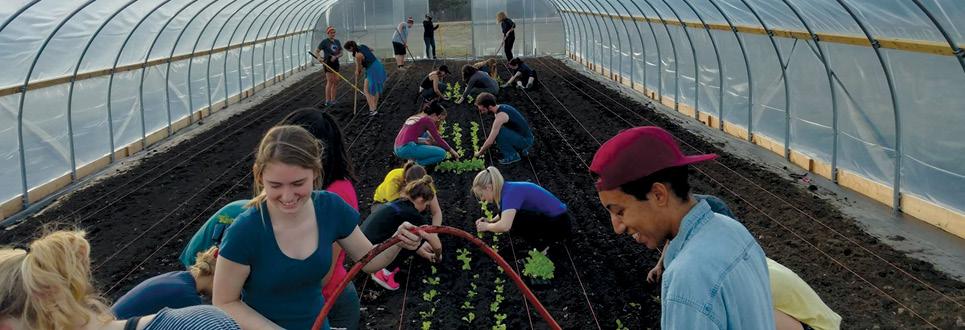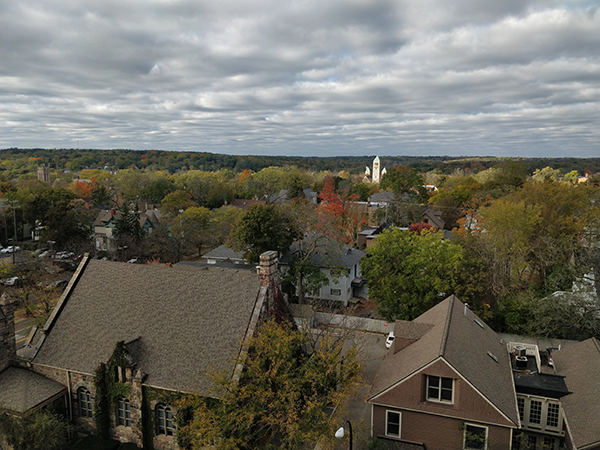Blog
Get the inside scoop about life at U-M and applying to Michigan from current student bloggers, Admissions staff, and guest faculty writers.

Get the inside scoop about life at U-M and applying to Michigan from current student bloggers, Admissions staff, and guest faculty writers.

Every campus tour seems to visit the same spaces, but what about the REAL campus (i.e. the one only current students know about)? Here’s my take on what to look for in your prospective college campus...

You’ve applied to college, you got in, and now you need to make a decision as to where you want to go. While academics are often the main factor we consider when choosing a college, prospective students should also think about how big a part the campus itself plays in their experience as a college student.
Most college campus tours show you similar places: the libraries, the one pretty courtyard where everyone takes their graduation pictures, or a busy square. While these are undoubtedly important aspects of campuses, in the limited time that is reasonable for tours, they cannot tell the whole story for prospective students.
Here’s my insider’s guide to campus at Michigan. Please note, some of these places may not be publicly accessible due to current COVID restrictions:

While a campus tour will undoubtedly take you to one of the many libraries on campus, you’re unlikely to see much beyond the one painted reading room in Hatcher Graduate Library.
While it is a beautiful space to study, it rarely reflects the remainder of the libraries that students use. So, try to get away from mainstream tours and get lost in the stacks. Who knows, you might even find your next favorite read!
While some students prefer working in the library, I have found that I require a location without as many students in one place. At U-M, this ranges from the lower floor of Palmer to the corridors of Angell Hall.
Personally, I have found the Lawyers’ Club to be both aesthetically pleasing and relatively calm compared to the majority of student study spots.

If your prospective school is as big on sports as U-M, you might be excited to see the facilities where both pro athletes and students train. Keep in mind that in order to use a majority of the facilities, such as the field hockey field or the ice rink, you’ll need to be a member of a school club, or wait for the public hours where the facilities are available to everyone.
One of the facilities that I was surprised to see available to students was the golf course; since as an international student I had always considered golf to be a sport only available to high socioeconomic ranks in country clubs. Make sure to visit it when it is open – due to Michigan winters, some facilities are seasonal.
One of the main things that I have found to be emphasized in college brochures is anything related to hobbies – from dance studios to woodworking workshops. Yet their existence and access may not always go hand in hand.
For example, Yost Ice Arena only hosts public ice skates once a day during its active season. And while U-M has many dance studios, only one is available to non-dance majors, in Couzens Hall.
Do your research, and make sure the auxiliary spaces you need to practice your beloved hobbies are present and accessible on your future campus.

As every college student learns, college towns have two downtowns: the downtown and the student downtown. While you might be lucky enough to indulge in a nice meal every once in a while in the actual downtown, the majority of your time and money will more likely be spent in the student downtown.
For U-M, this is undoubtedly South University Avenue. (referred to as South U. by current Wolverines) and a little bit of East Liberty Street. On these streets, you’ll see where students grab their $1-a-slice pizza after a night out and the coffee shops which fuel their willingness to go to an 8 a.m. class.

While residence halls are available for your first year, chances are that you’ll have to move to an off-campus accommodation once your first year is over. I’d highly recommend taking a stroll through the neighborhoods where upperclass students live.
You’ll definitely find them between South U. and Burns Park, north of North Quad and Rackham, and behind the Union to Ashley Street. While each neighborhood might have a differing student demographic due to its proximity to different schools, the essence of student housing will remain in these neighborhoods.
Now that you know what to look for, put on your walking shoes, and explore campus on your own terms!

Lara Mutluay is a senior majoring in Cellular, Molecular and Developmental Biology (MCDB) and Ecology and Evolutionary Biology (EEB). In addition to her studies, she conducts research at Freddolino Lab in Biological Chemistry Department at the U-M Medical School. Lara is an international student from Turkey and is very passionate about climate change and how it especially affects marine ecosystems. She is currently creating her own travel blog on Instagram (@filterless.travels) where she aims to portray overly edited touristic places as they really are. In her free time, she can be found figure skating, scuba diving, reading or binge watching whatever new obsession of hers is on Netflix.